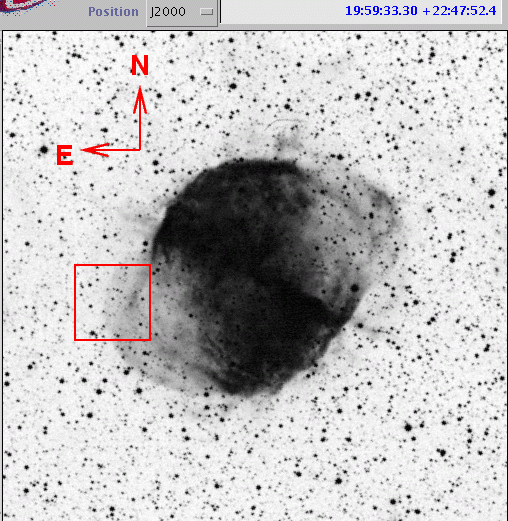
On the night of Sep 05/06, 2005 EDT, I used the RIT Observatory's 12-inch Meade telescope and SBIG ST8E CCD camera to take pictures of M27, the Dumbbell Nebula. In the past few weeks, a new variable star has been discovered here, and I wanted to see if I could measure it.
The plan:
Notes from the night
Here's a chart showing M27 and the rough location of the new variable star:

The Yahoo group on VarVul05 has a very nice color image with stars marked for comparison, and photometry of those stars in multiple passbands supplied by Arne Henden. Below is a portion of the chart, showing the same region outlined in red above. Click on the image below for the full (large) version.
I took a series of 120-second exposures, starting at about UT Sep 06 00:47 and ending at 01:35; that makes the middle of the sequence about UT 01:11, or about JD 2,453,619.55. The variable was clearly much fainter in my images than in the charts -- much too faint to measure directly on any one image. I therefore added together the best 16 frames, first shifting them slightly to align and subtracting the sky from each. I tried using both a median and a sum to combine these images, and the sum looked better. Here's the entire image, with a hard stretch to show the inner portions of M27:
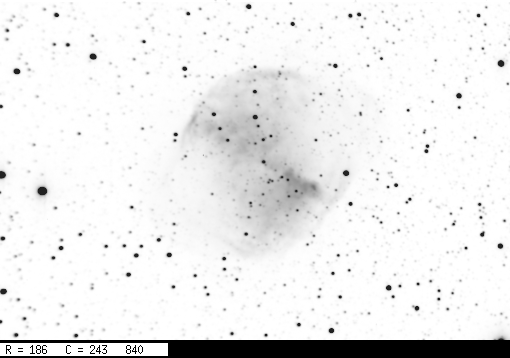
In a softer stretch, one can faintly make out the "fan" of stars near the target.
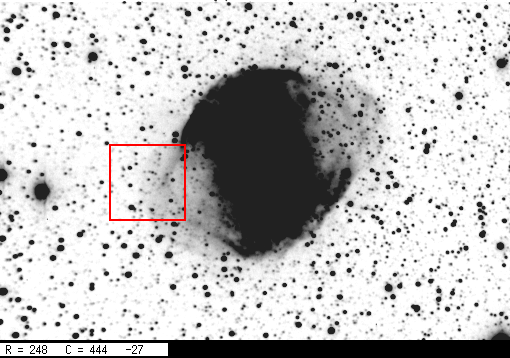
If one zooms in on this combined image, one finds a rather blocky picture (recall that the pixel scale on our camera is about 1.85 arcseconds per pixel).
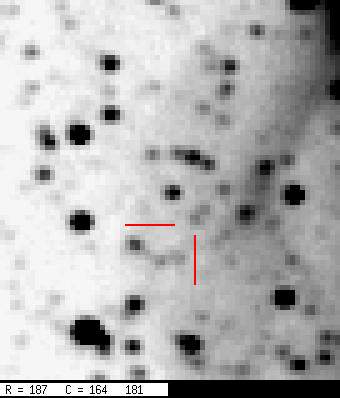
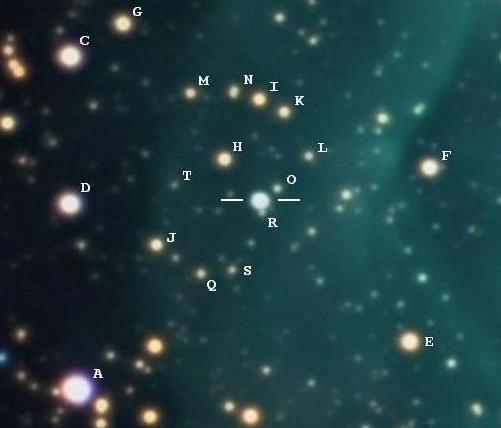
It is clear that the variable star has faded quite a bit since the color picture was taken on Aug 28, 2005. My image barely shows a source at the position of the variable star. I tried measuring its brightness, but it was just too faint, and in too crowded a location, for aperture photometry to yield any decent measurement. About all I can say is that VarVul05 appears roughly as bright as the nearby star "O" just above it.
Based on the instrumental magnitudes of other stars in the field, my unfiltered images are closer to the "R" passband than the "V" passband. Since star "O" has magnitude R=18.389, my conclusion is
VarVul05 R mag approx 18.4 at UT 2006 Sep 06 01:11
JD 2,453,619.55
There has been some speculation that this variable star may be of the "UGSU" type: an interacting binary star in which material from one member swirls around an accretion disk before falling onto the other.
Every now and then, an instability in the flow of gas through the disk causes the disk to flare up brightly and remain bright for several weeks. In 2001, another star called WZ Sge underwent a very bright superoutburst: it brightened by about 7 magnitudes, faded gradually, then suddenly dipped by about 2 magnitudes before entering a strange "echoes" phase for several weeks.
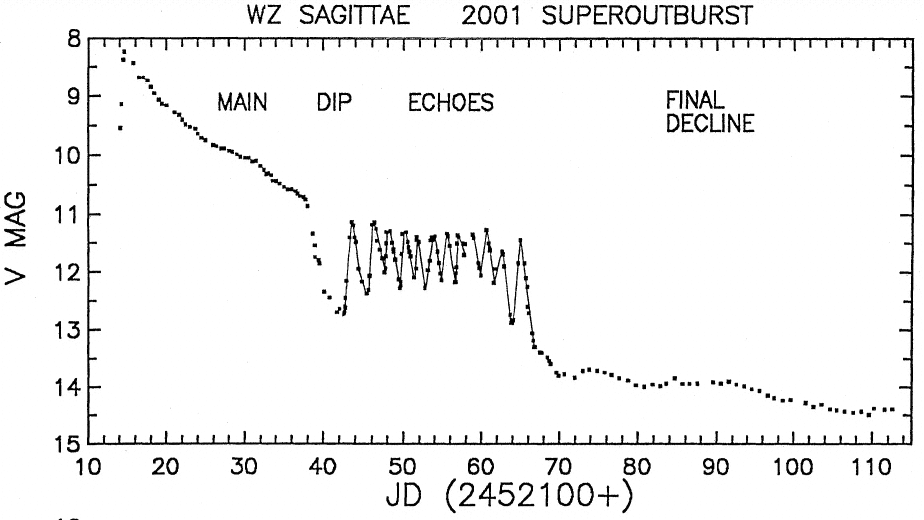
You can read more about WZ Sge in the paper from which the figure was taken, The 2001 Superoutburst of WZ Sagittae by Patterson et al., PASP 114, 721 (2002).
Taichi Kato recommends the following papers on other similar stars:
I was suprised to find VarVul05 so faint -- I was expecting to be able to measure its brightness with some precision, based on the most recent reports showing it to be around mag 17-17.5. But it was much fainter. Perhaps this rather sudden drop in brightness could be due to a "dip" like the one in the graph of WZ Sge shown above. If so, one might expect that VarVul05 would be brighter again in the near future ...
Last modified 9/12/2005 by MWR.